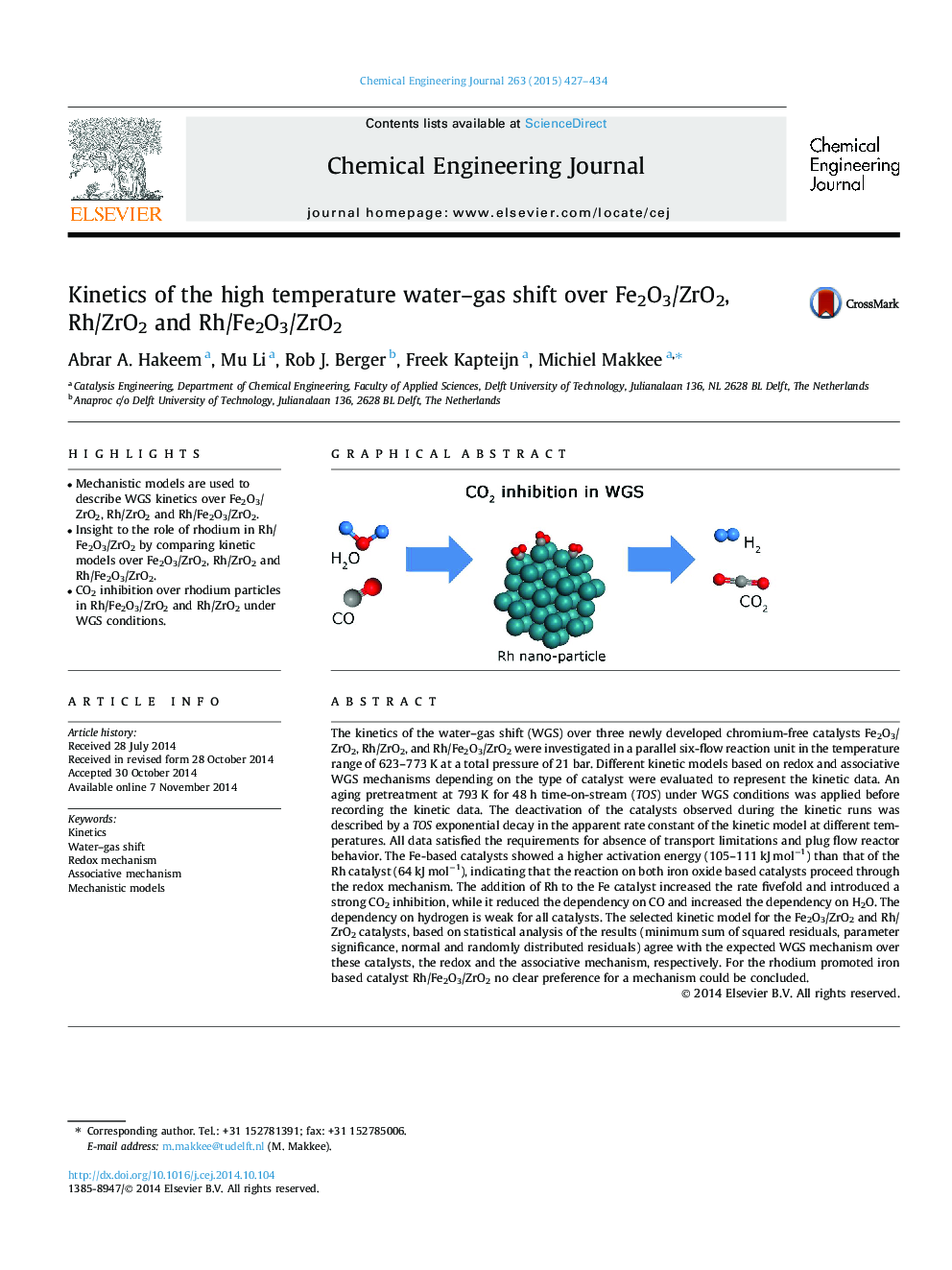| کد مقاله | کد نشریه | سال انتشار | مقاله انگلیسی | نسخه تمام متن |
|---|---|---|---|---|
| 146707 | 456376 | 2015 | 8 صفحه PDF | دانلود رایگان |

• Mechanistic models are used to describe WGS kinetics over Fe2O3/ZrO2, Rh/ZrO2 and Rh/Fe2O3/ZrO2.
• Insight to the role of rhodium in Rh/Fe2O3/ZrO2 by comparing kinetic models over Fe2O3/ZrO2, Rh/ZrO2 and Rh/Fe2O3/ZrO2.
• CO2 inhibition over rhodium particles in Rh/Fe2O3/ZrO2 and Rh/ZrO2 under WGS conditions.
The kinetics of the water–gas shift (WGS) over three newly developed chromium-free catalysts Fe2O3/ZrO2, Rh/ZrO2, and Rh/Fe2O3/ZrO2 were investigated in a parallel six-flow reaction unit in the temperature range of 623–773 K at a total pressure of 21 bar. Different kinetic models based on redox and associative WGS mechanisms depending on the type of catalyst were evaluated to represent the kinetic data. An aging pretreatment at 793 K for 48 h time-on-stream (TOS) under WGS conditions was applied before recording the kinetic data. The deactivation of the catalysts observed during the kinetic runs was described by a TOS exponential decay in the apparent rate constant of the kinetic model at different temperatures. All data satisfied the requirements for absence of transport limitations and plug flow reactor behavior. The Fe-based catalysts showed a higher activation energy (105–111 kJ mol−1) than that of the Rh catalyst (64 kJ mol−1), indicating that the reaction on both iron oxide based catalysts proceed through the redox mechanism. The addition of Rh to the Fe catalyst increased the rate fivefold and introduced a strong CO2 inhibition, while it reduced the dependency on CO and increased the dependency on H2O. The dependency on hydrogen is weak for all catalysts. The selected kinetic model for the Fe2O3/ZrO2 and Rh/ZrO2 catalysts, based on statistical analysis of the results (minimum sum of squared residuals, parameter significance, normal and randomly distributed residuals) agree with the expected WGS mechanism over these catalysts, the redox and the associative mechanism, respectively. For the rhodium promoted iron based catalyst Rh/Fe2O3/ZrO2 no clear preference for a mechanism could be concluded.
Figure optionsDownload as PowerPoint slide
Journal: Chemical Engineering Journal - Volume 263, 1 March 2015, Pages 427–434